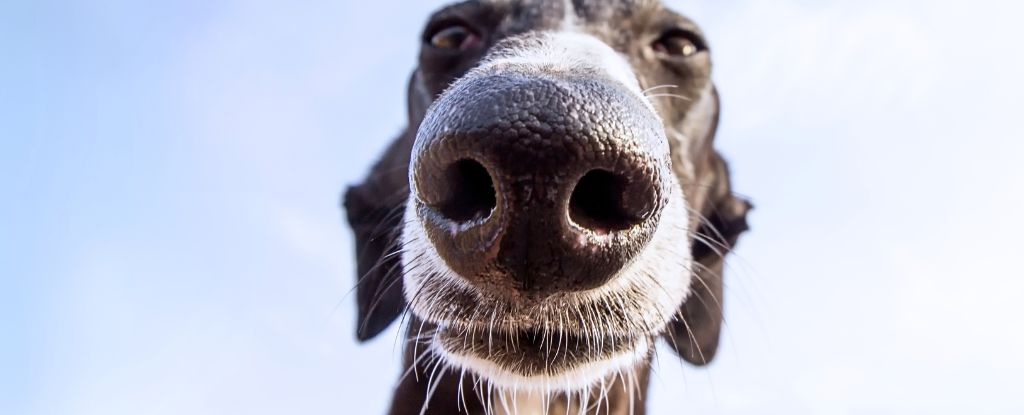
Unveiling the World Through a Dog's Nose: A Sensory Journey
The adage "a dog's nose knows" couldn't be closer to the truth. For our four-legged companions, their world is unveiled through an extraordinary sense far more developed than ours. Dogs navigate their environment with a sensory superpower—smell—which offers them insights into their surroundings in a way we can barely fathom. This blog post will unravel the fascinating journey of how dogs perceive their world, starting with their most potent tool, the nose.
The Canine Nose: A Marvel of Evolution
Dogs have an olfactory system that far surpasses human capability. Unlike humans, who rely heavily on visual cues, canines use olfaction as their primary method of understanding the world. A dog's nose can detect a myriad of scents and can differentiate subtle variations that are imperceptible to the human olfactory system.
The secret to this super smell lies in the anatomy of a dog's nose. Within the nasal cavity, dogs have around 300 million olfactory receptors, compared to a human's five to six million. This immense difference provides an insight into the dog's ability to discern numerous scents even in complex environments.
The Science Behind a Dog's Sense of Smell
The remarkable olfactory abilities of dogs extend beyond the sheer number of receptors. Another key component is the way the canine nose processes scent. When a dog inhales, different airway structures direct the airstream, allowing dogs to separate the scents they are sniffing. One passage is dedicated to respiration, while the other is reserved for olfaction.
Additionally, the canine brain also plays a significant role in processing smells. The olfactory bulb in dogs is roughly 40 times larger than ours, relative to brain size. This larger bulb gives dogs the incredible capability to parse scent information in ways humans cannot imagine.
How Dogs Use Their Sense of Smell
The heightened sense of smell in dogs is not just for novelty; it is an essential tool for survival and interaction. Canines can identify pheromones which tell them about another dog's health, diet, emotional state, and even mating readiness. This allows them to navigate social interactions with precision.
Tracking is another significant function of a dog's honed scent abilities. Whether assisting in search and rescue missions, hunting, or simply finding their way home, a dog’s sense of smell acts as a natural compass. Many canine breeds have been specifically trained and bred to enhance these capabilities for various human endeavors.
The Role of a Dog's Nose in Perception
A dog's perception of reality is intrinsically tied to its nose. Scent can enhance other sensory experiences or even compensate for limitations in vision or hearing. When entering a room or a new environment, a dog will often lead with its nose, assessing the scents presented to form an understanding of its surroundings.
Interestingly, dogs often "see" in smells, creating a complex scent map that mimics human visual cognition. Every scent contains a story—from the presence of other animals to the time of day based on dew's interaction with the environment—forming a continuous narrative for the dog to interpret.
Enhancing Our Bond Through Understanding
Understanding the significance of a dog's sense of smell not only enhances our appreciation for these incredible creatures but also improves our relationship with them. Engaging in activities that stimulate your dog’s olfactory senses can be enriching for both you and your pet. Scent games, for example, offer a way to harness this natural ability and provide mental and physical stimulation.
Moreover, by being aware of the importance of scent, owners can create environments that are appealing and comforting for their dogs, reinforcing positive behaviors and well-being. Recognizing where and what your dog loves to sniff can give insights into their preferences and personality.
A Nose for the Future
As science continues to explore the capabilities of canine olfaction, the potential applications in medicine, security, and conservation are boundless. Dogs are already being trained to detect diseases such as cancer and diabetes and are proving invaluable in conservation efforts for tracking endangered species through their scat.
As our understanding grows, the integration of canine scent detection into new domains will keep expanding, continuously showcasing the remarkable synergy between humans and dogs.
Conclusion
The world seen through a dog's nose is a vibrant tapestry of scent and story. While we may never fully perceive the world as they do, gaining a deeper understanding of how dogs use their noses unveils their unique perspective. Celebrating and fostering this incredible sense of smell not only enriches the lives of our canine companions but enhances our connection to them. As we continue to harness the abilities of dogs, one thing remains clear: the nose truly knows.


